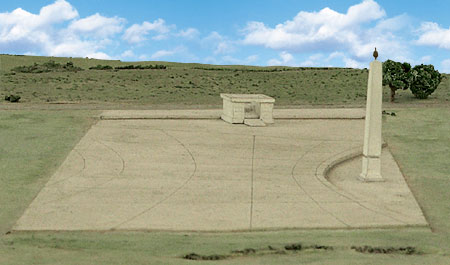
You step onto a huge expanse of travertine paving marked out with bronze lines, Greek symbols, and signs of the zodiac. You look up at the granite obelisk towering nearly 100 feet above you, topped with a spiked bronze ball, and you suddenly realize that you are standing in the middle of the world's largest sundial. Curious, you walk to the base of the obelisk to read the inscription:
IMP CAESAR DIVI F AVGVSTVS PONTIFEX MAXIMVS IMP XII COS XI TRIB POT XIV AEGVPTO IN POTESTATEM POPVLI ROMANI REDACTA SOLI DONVM DEDIT
Emperor Caesar Augustus, son of the Deified Julius, chief priest, commander 12 times, consul 11 times, with tribunician power 14 times, gave this gift to the Sun after Egypt had been brought under the power of the Roman people.
You remember now that in 10 BCE, twenty years after conquering Antony and Cleopatra at the Battle of Actium, Augustus had erected this giant sundial, designed by the mathematician Novius Facundus, using this Egyptian obelisk as its pointer. What had been a symbol of the fabled power of ancient Egypt was now just a tool through which the conquering Romans could tell time! You also remember that on September 23, the autumnal equinox and also the birthday of Augustus, the shadow of the obelisk reaches into the ceremonial entrance of the Ara Pacis itself, symbolically ratifying the altar's messsage of peace through Roman power.